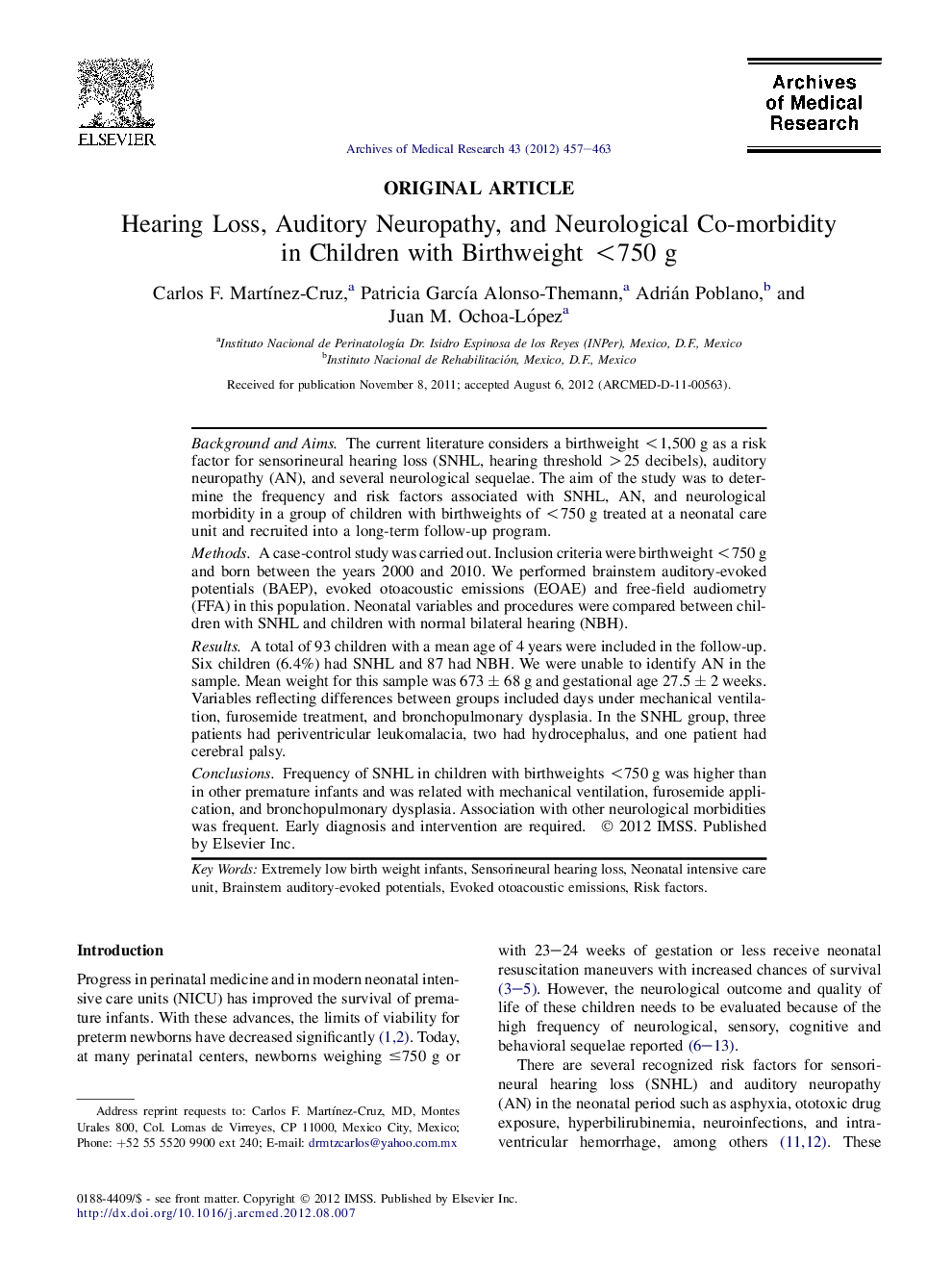| Article ID | Journal | Published Year | Pages | File Type |
|---|---|---|---|---|
| 3447099 | Archives of Medical Research | 2012 | 7 Pages |
Background and AimsThe current literature considers a birthweight <1,500 g as a risk factor for sensorineural hearing loss (SNHL, hearing threshold >25 decibels), auditory neuropathy (AN), and several neurological sequelae. The aim of the study was to determine the frequency and risk factors associated with SNHL, AN, and neurological morbidity in a group of children with birthweights of <750 g treated at a neonatal care unit and recruited into a long-term follow-up program.MethodsA case-control study was carried out. Inclusion criteria were birthweight <750 g and born between the years 2000 and 2010. We performed brainstem auditory-evoked potentials (BAEP), evoked otoacoustic emissions (EOAE) and free-field audiometry (FFA) in this population. Neonatal variables and procedures were compared between children with SNHL and children with normal bilateral hearing (NBH).ResultsA total of 93 children with a mean age of 4 years were included in the follow-up. Six children (6.4%) had SNHL and 87 had NBH. We were unable to identify AN in the sample. Mean weight for this sample was 673 ± 68 g and gestational age 27.5 ± 2 weeks. Variables reflecting differences between groups included days under mechanical ventilation, furosemide treatment, and bronchopulmonary dysplasia. In the SNHL group, three patients had periventricular leukomalacia, two had hydrocephalus, and one patient had cerebral palsy.ConclusionsFrequency of SNHL in children with birthweights <750 g was higher than in other premature infants and was related with mechanical ventilation, furosemide application, and bronchopulmonary dysplasia. Association with other neurological morbidities was frequent. Early diagnosis and intervention are required.
